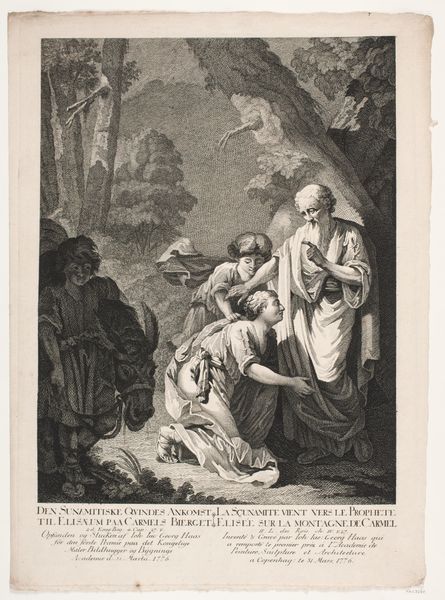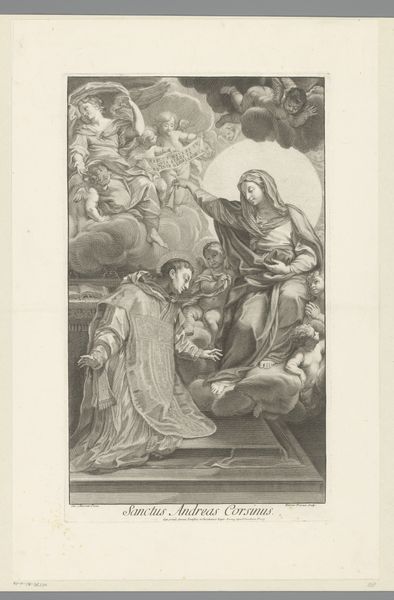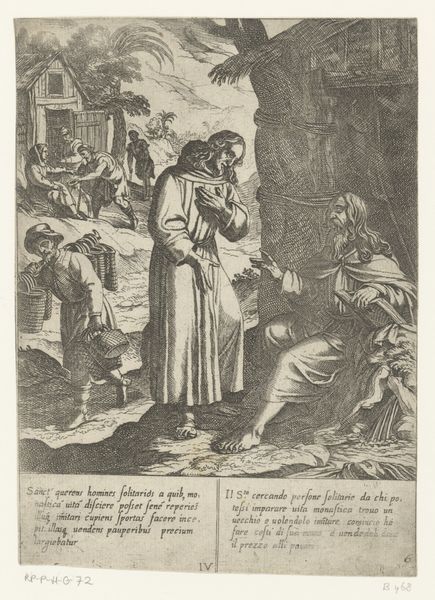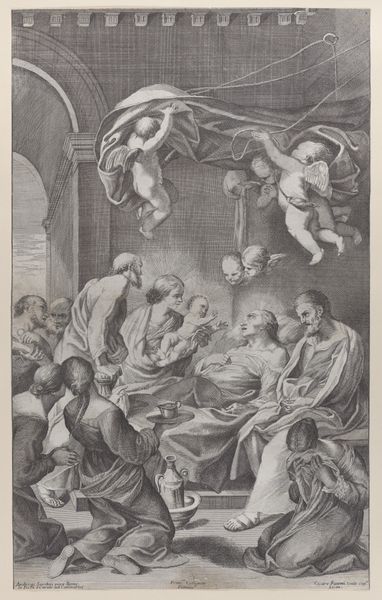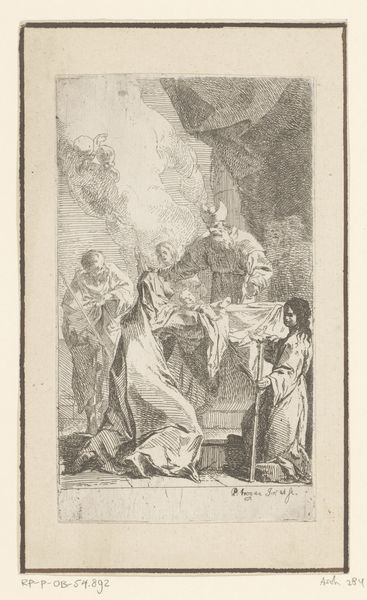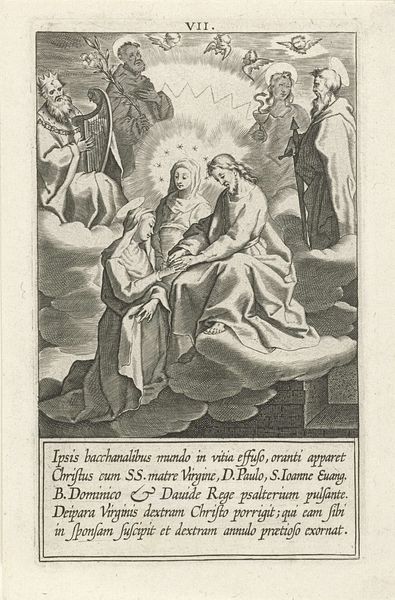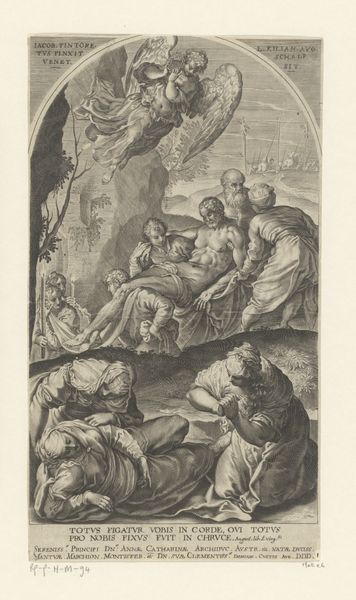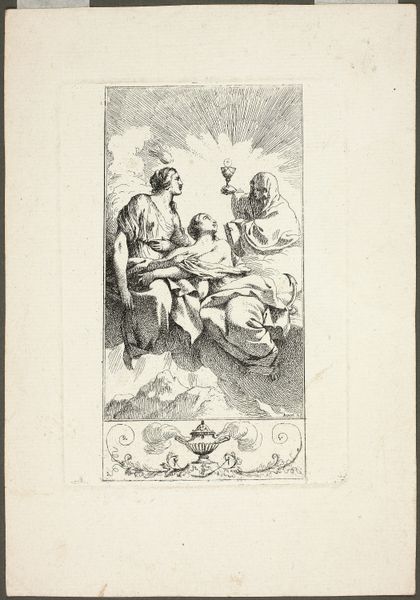
print, etching
#
narrative-art
#
baroque
# print
#
etching
#
traditional media
#
figuration
#
history-painting
Dimensions: height 223 mm, width 153 mm
Copyright: Rijks Museum: Open Domain
Curator: Look at the intricate details in this print; Claude Vignon etched "Christus wekt de dochter van Jaïrus op" between 1638 and 1643. It depicts the raising of Jairus' daughter. Editor: It’s quite dramatic, even stark. The dense crosshatching creates deep shadows. I immediately focus on the pleading figures—such pronounced emotion. Curator: Exactly, it embodies the Baroque emphasis on drama. Consider how Vignon leverages the symbolic gesture. Christ’s raised hand, a traditional blessing, is positioned to command attention in a world filled with mourning. The artist is making his mark on visual culture through the weight of his theological influences. Editor: And it highlights how printmaking made biblical narratives more accessible to the masses. Prior to this, access was extremely restricted to religious experiences. These would be disseminated to private collections. Prints held an integral part in society. Curator: Indeed. That dissemination reflects a broader trend, an appeal for visual and spiritual education that was critical at this time. It becomes both an intimate devotional object and also affirms, in a sense, that spiritual instruction goes to the hands of the many. Editor: Although, sometimes these could carry conflicting ideology or social commentary about certain elements, whether on purpose or by accident. Vignon creates tension here—the stillness of death versus the fervent hope. He gives equal weight. Curator: It's that tension that reveals the heart of belief. To believe means that a figure is poised between two possibilities, not necessarily one over another, despite obvious realities. The crosshatching suggests the complexity of life's spiritual layers, both shadow and light. Editor: Well, viewing it now, and knowing a bit more about its context, helps to contextualize not just a pretty work on the wall, but one that bears witness to a society in tumult, change, but hope. Curator: Agreed. By studying prints, we see reflections of how societies, then and now, reconcile narrative art and our own mortal existences.
Comments
No comments
Be the first to comment and join the conversation on the ultimate creative platform.
